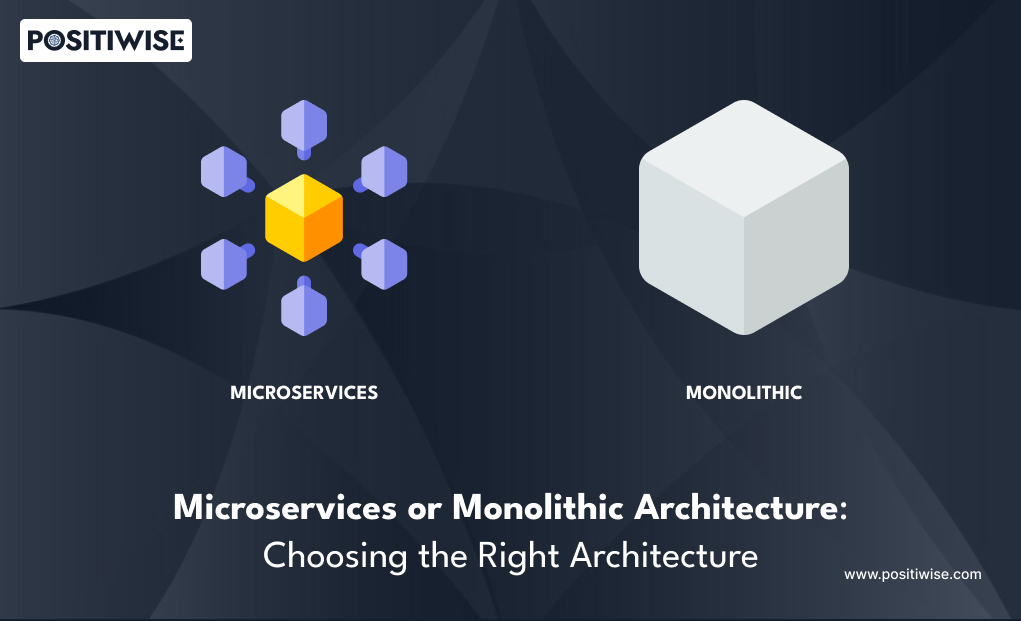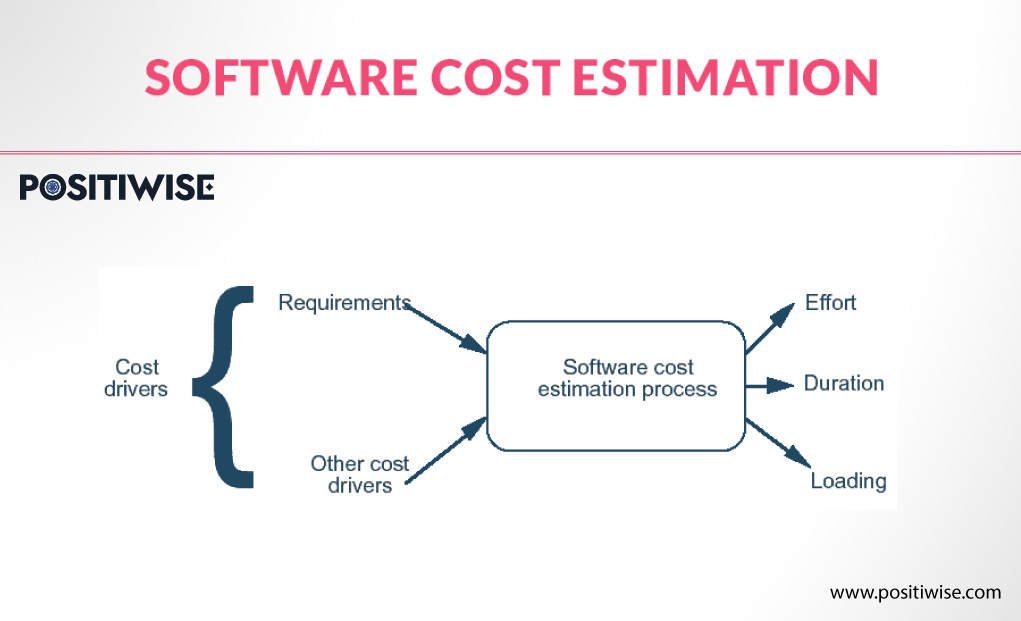Quick Overview:
The blog helps you understand the exact difference between monolithic and microservices architecture. You will explore an overview of both architecture and their pros and cons. In addition, for detailed insight, both architectures are differentiated on the basis of cost, development, deployment, scalability, and other similar factors.
Microservices or Monolithic Architecture
Over recent years, microservice architecture has become quite popular among large organizations like Google, Netflix, and more. Nowadays, most of the companies are even migrating their monolithic applications to microservices.
Due to this, numerous firms are in conflict about whether they should stay on monolithic architecture or migrate to microservices. In addition, enterprises looking to develop their application find it complex to choose relevant architecture. But, clarity is needed, as here we have represented the detailed overview, pros, cons, and differences between monolithic vs microservices architecture.
What is Monolithic Architecture?
A monolithic architecture is a traditional approach for deploying an application with three primary components – server, database, and interface. All three components are held together and managed in a single place.
When you use monolithic architecture, you only have a single codebase to work upon. And in case you want to update any feature, the entire application has to hold it working. Currently, for dynamic user requirements, organizations do not use monolithic applications, and even professionals don’t consider it much.
However, monolithic architecture is a reliable choice in scenarios where everything needs to be updated or deployed at once.
Pros of Monolithic Architecture
Regardless of whether the monolithic architecture is highly used, it offers some amazing benefits, as shown below.
- It makes application deployment quick, easy, and cost-efficient.
- The monolithic application is easy to develop, as it doesn’t require different source code for every component.
- Testing an application based on monolithic architecture is quite easy. Most of the bugs are discovered and patched by the developer only.
- It offers a seamless way to debug the code, fix loopholes and bugs, and handle exceptions.
- It helps you save time, as the entire application is deployed at a single time.
Cons of Monolithic Architecture
You can still use monolithic architecture in this advanced technological era. But, before that, you should understand its cons as listed below.
- It’s not considered compatible with the growing user base, as more updates can cause frequent availability issues.
- All the components are dependent on each other and on a single hardware. If any of the components fail, the entire software suffers.
- A minor modification and update impacts the overall architecture, sometimes leading to unexpected issues.
- The scalability is limited in monolithic architecture, as it doesn’t ensure seamless application growth with an increased user base.
- Complications are created while integrating new technologies with monolithic architecture-based applications.
What is Microservices Architecture?
Unlike monolithic architecture, microservices architecture supports deploying application services on the individual infrastructure. You can consider it as a distributed approach for deploying the application. Nowadays, numerous software development companies prefer this approach, as it helps in achieving greater scalability, flexibility, and easy maintenance.
In addition, microservices support decoupling the application, making detecting and removing complexities easier. Moreover, if you update a single service or feature in this architecture, other components will remain in the same state. And the availability of your application will retain, providing an impeccable experience to end-users.
Furthermore, some people think that microservices reduce complexity. But, it’s not true because you must maintain resources for all the services deployed individually.
Pros of Microservices Architecture
Microservices architecture is highly used, as it offers the following benefits:
- It enables you to integrate newer technologies into the application while retaining its availability and flexibility.
- Microservices applications can efficiently scale up to serve every end-user with utmost performance.
- Every component has its own dedicated resources, leading to maintaining the software’s speed and performance in every aspect.
- If any fault is dedicated to a component, only that particular mechanism can be isolated, and others can provide their functionality as usual.
- It increases the flexibility for agile development and DevOps teams to complete software testing, updates, and maintenance within minimal time.
Cons of Microservices Architecture
Besides the astonishing microservices benefits, there are also a few cons that you should consider before utilizing it.
- It can slow down the development and deployment procedure if teams working on different services are not efficiently collaborating.
- The infrastructure costs are increased, as every service requires its own environment and resources to run.
- If the logs for all services are stored in one place, it can complicate the debugging and troubleshooting operations.
- Aligning to industry standards can become a monumental task due to the diversified platforms used for different services.
- Complexities can occur during testing because of the independent deployment of components. You need to invest in experts who are experienced in microservices app testing. For example, if a .NET app is deployed on microservices architecture, you will need to avail of .NET development services from a reputed firm.
Primary Differences Between Monolithic vs. Microservices Architecture
The overview, pros, and cons are not always enough to decide on the right architecture. So, here we have provided the difference between monolithic and microservices architecture on the basis of development, debugging, deployment, scalability, and all such other factors.
1: Development Procedure
The procedure to develop a monolithic application is pretty streamlined as compared to microservices architecture.
The planning for a monolithic application is completed within minimal time, as the code for all components is included in a single file. The developers can write the code for the assigned tasks and add it to the defined repository. But, when it comes to releasing updates, the experts have to plan extensively to maintain resource availability.
Further, in the case of developing microservices applications, the development team has to conduct a thorough planning phase. They have to finalize the platform for all components and the development of mechanisms and APIs to establish communication between them. But, compared to monolithic architecture, microservices apps are much easier to update.
2: Debugging Operations
The main purpose of debugging is to find issues, bugs, and errors to fix them before deployment.
Debugging a monolithic architecture-based application is quite easy in comparison to microservices software. The developers have to check only a single file in accordance with the platform on which it’ll be running.
However, in the microservices architecture, developers must focus on each component individually. Due to this, more time, cost, and resources are consumed. Also, if the teams developing the different services don’t collaborate, compatibility, inter-service communication, security, and performance issues can arise.
3: Deployment Process
If you choose monolithic architecture, it’ll take you half or less time to deploy your application as compared to microservices architecture. The monolithic apps can be directly deployed to any of your selected platforms. Also, it gets within minimal time, as all the components and source code run on the same system/environment.
On the other hand, deploying an app on microservices architecture requires additional efforts because most services need different platforms to run. Mostly, developers use a container mechanism for microservices, as containers can hold code and associated components in an isolated way. It helps to individualize each service and achieve loosely coupled application objectives.
4: Scalability and Reliability
In terms of scalability, microservices are more preferred.
Suppose you want to scale up a single feature of the application. If you are using monolithic architecture, the entire application will need revamping. Also, you must scale up the resources for all components, even if they don’t require additional support.
But, if you are using microservices architecture, you can scale up only a single functionality that can handle user growth. It will provide you with three primary benefits as below:
- The cost of resources required for the entire software will be saved.
- Only the specific app component will be scaled up. And during its modification, other mechanisms will be available to end-users, functioning as before.
- The development team’s efforts will be reduced.
5: Update and Modifications
In terms of releasing updates and modifying applications, microservices are considered a better approach for complex applications.
You can update a single component, feature, and functionality in a microservice architecture. Also, if you want to integrate additional features, you can deploy services in a separate environment and connect to the app through API. Due to this, DevOps engineers highly prefer it while working with CI/CD pipelines.
In contrast, monolithic architecture limits the flexibility. It allows you to update the entire source code, even if you want the slightest modification. It only leads to additional developer efforts and resource costs to retest the application. Due to this, professionals consider monolithic architecture for static websites and similar small-scale projects.
Empower Your Vision with Tailored Software Development Solutions
Transform your ideas into reality with our customized software development services to empower your vision and drive success.
Monolithic or Microservices Architecture Impact on Business Operations
Now, let’s look at the difference in achieving operational objectives after implementing monolithic and microservices architecture.
1: Risk Reduction
When the development team builds a code base, it’s obvious to experience bugs and errors. But, in case to reduce them, microservices are considered a better approach.
In microservices, if a single service causes errors or throws exceptions, only the platform or environment running that service will be impacted. The rest of the application will work smoothly per its defined logic. But, in the case of monolithic architecture, a minor unresolved can cause the entire application to crash.
In addition, if the attackers find a loophole in the monolithic application, they can breach the entire codebase. Thus, the risk of getting unavailable and hacked is higher in monolithic architecture than in microservices.
2: Faster Development and Innovation
In terms of development, microservices take more time, as developers have to plan each service’s development, deployment, and maintenance individually. Also, multiple repositories are maintained in such projects due to their loosely coupled components. However, creating a monolithic architecture is less time-consuming and more streamlined. The programmers add all code blocks in a single file and deploy it all together.
Further, in terms of innovation, microservices are considered a reliable option. You can integrate any feature and technology without impacting the current software. In a monolithic, you have to modify the complete codebase to add new functionality and technology.
3: Development and Maintenance Cost
The cost of developing and maintaining a monolithic architecture application is low due to the following reasons:
- There is no requirement for multiple teams to manage different services.
- Only a single codebase needs to be maintained.
- For cloud deployment, availing of a single cloud infrastructure is enough.
- Only one codebase is developed, making adding code and testing its compatibility accessible.
In comparison, microservices are considered expensive because of the following reasons:
- Multiple teams can be required to develop the services and deploy them on their preferred platform.
- A large number of APIs are needed to build communication between services.
- It takes more time to debug and test the microservices application.
The Tabular Format Difference Between Monolithic and Microservices Architecture
Now, let’s have a quick look at all the differences. The tabular format below can be used as a reference while choosing between microservices and monolithic architecture.
| Basis | Monolithic Architecture | Microservices Architecture |
|---|---|---|
| Planning | Planning is completed quickly. Primarily within 3 to 4 weeks or less for a small-scale project. | Intensive planning is conducted, taking more time than a monolithic app. |
| Development | Less resources are required, as the entire code needs to be in the same repository. | More resources are needed to manage the code for each service individually. |
| Testing | Testing is completed impeccably. The entire source code is tested at once. | Testing consumes more time as each service functionality is validated one by one. |
| Deployment | The entire software is deployed at once and as a single file. | All the services are deployed individually per their required platform. |
| Cost | The cost of development, deployment, and maintenance is less. | It’s quite expensive, and a significant upfront cost is its fundamental requirement. |
| Debugging | All the bugs, errors, and issues are discovered and fixed in a single file. | Developers need to debug multiple files, consuming more resources and effort. |
| Maintenance | Easy to maintain. | Complex to maintain loosely packed components. |
| Upgradation | It’s complex to update. For a single feature, the entire source code is upgraded. | Easy to upgrade. The service requiring advancement is only modified. |
| Scalability | This can cause additional costs and resources. | Affordable and reliable to scale. |
Concluding Up: Which Architecture To Use Between Monolithic vs Microservices?
Monolithic and microservices architecture completely contrast with each other. Where monolithic development is streamlined and requires less time; on the other hand, microservices are complex and consume more resources.
However, choosing between the two entirely depends on your requirements. If your project is of small size with minimal functionalities, then monolithic architecture is a reliable choice. But, if you want to avoid unavailability, integration of newer technologies anytime, and higher scalability, then microservices are preferred. Thus, you should cross-verify architecture characteristics, pros and cons with your requirements to choose the most relevant one for your project.
Expert in Marketing Strategy and Brand Recognition
Jemin Desai is Chief Marketing Officer at Positiwise Software Pvt Ltd, he is responsible for creating and accelerating the company’s marketing strategy and brand recognition across the globe. He has more than 20 years of experience in senior marketing roles at the Inc. 5000 Fastest-Growing Private Companies.






